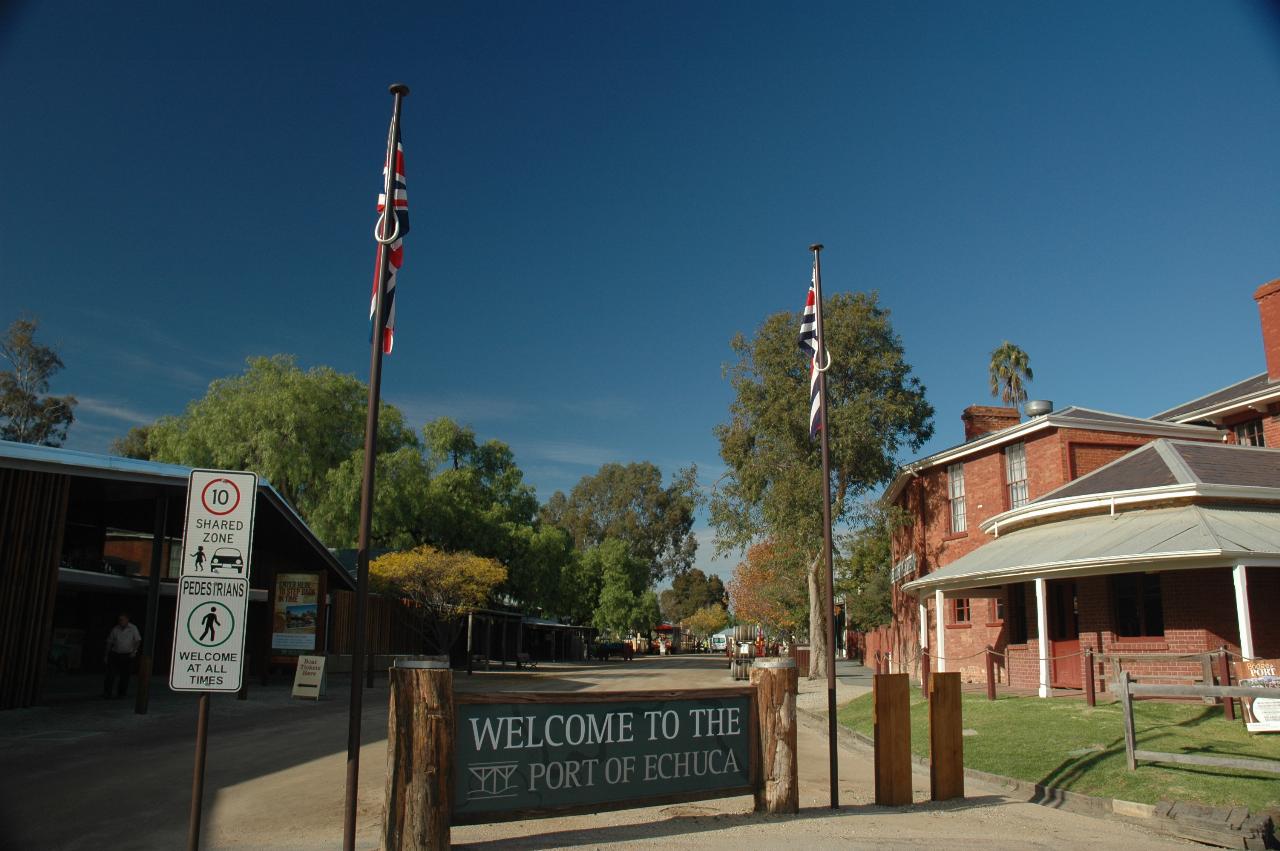

The Port of Echuca was the busiest inland port in Australia in the 1880s. Rivers are no longer the main transport artery for inland areas, but the port has made much use of its heritage to attract the tourist trade. The building on the left - not too easy to see - is the Discovery Centre, which oversees operations, including the museum and much steam powered equipment shown during guided tours. This is also where the paddle wheelers are maintained and/or restored.
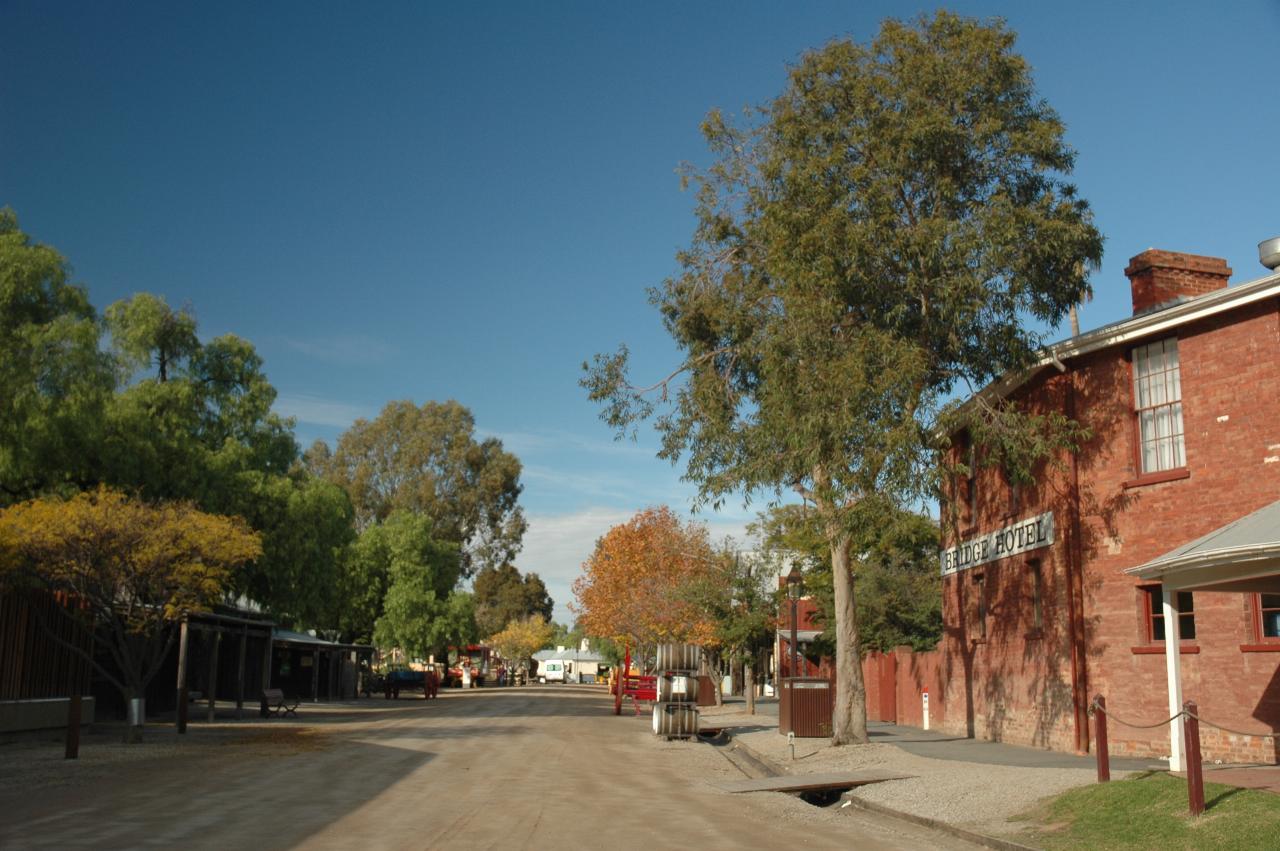
Murray Esplanade was the hub of Echuca's busy port in the 1860s, with a rail line running right up to the wharf. Those days are long gone, but the street had a complete makeover, including the dirt road, for the 1980s TV mini-series All The Rivers Run, which was recorded here and other River Murray locations.
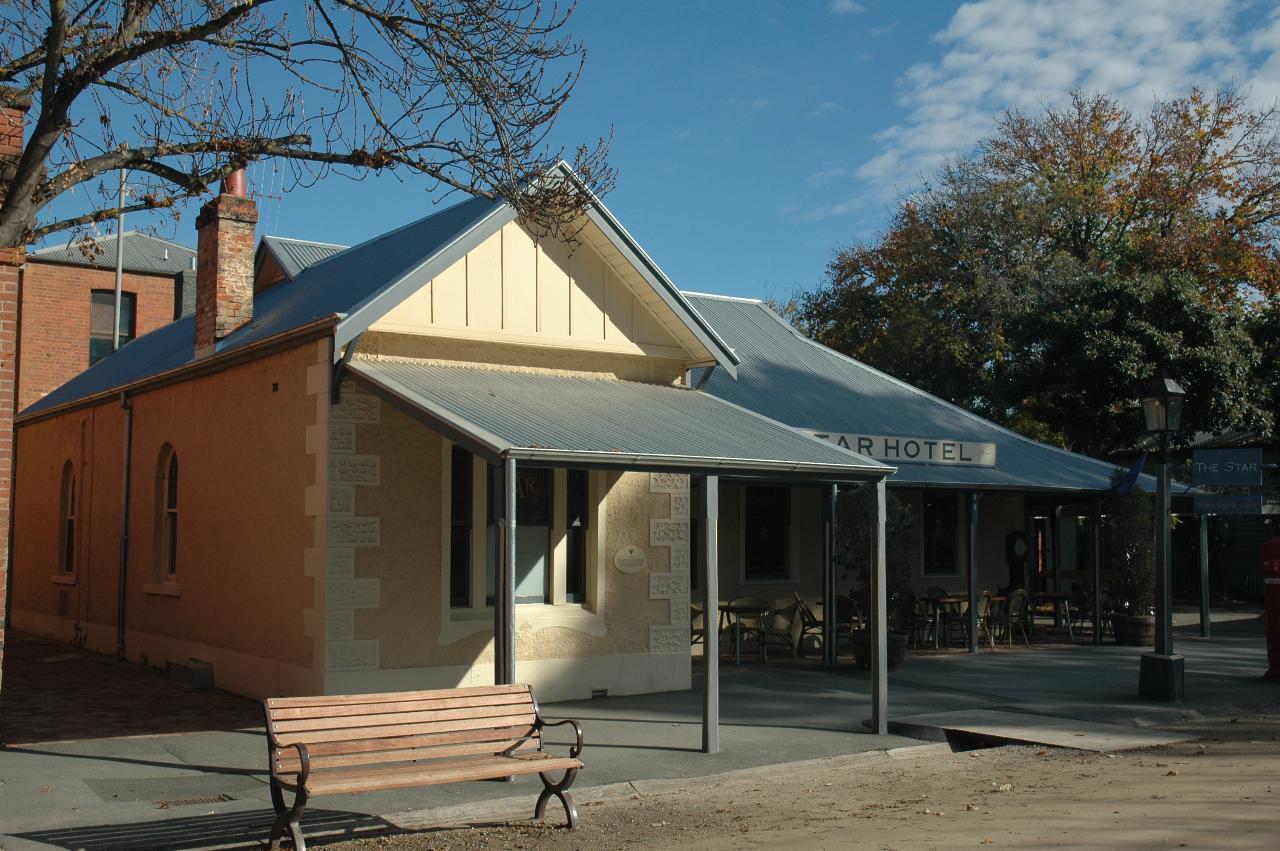
The Star Hotel was one of a large number of pubs during the port's busy periods. And includes an underground bar, with escape route out the back, so patrons could escape during a police inspection. It is included in the guided tour from the Discovery Centre.
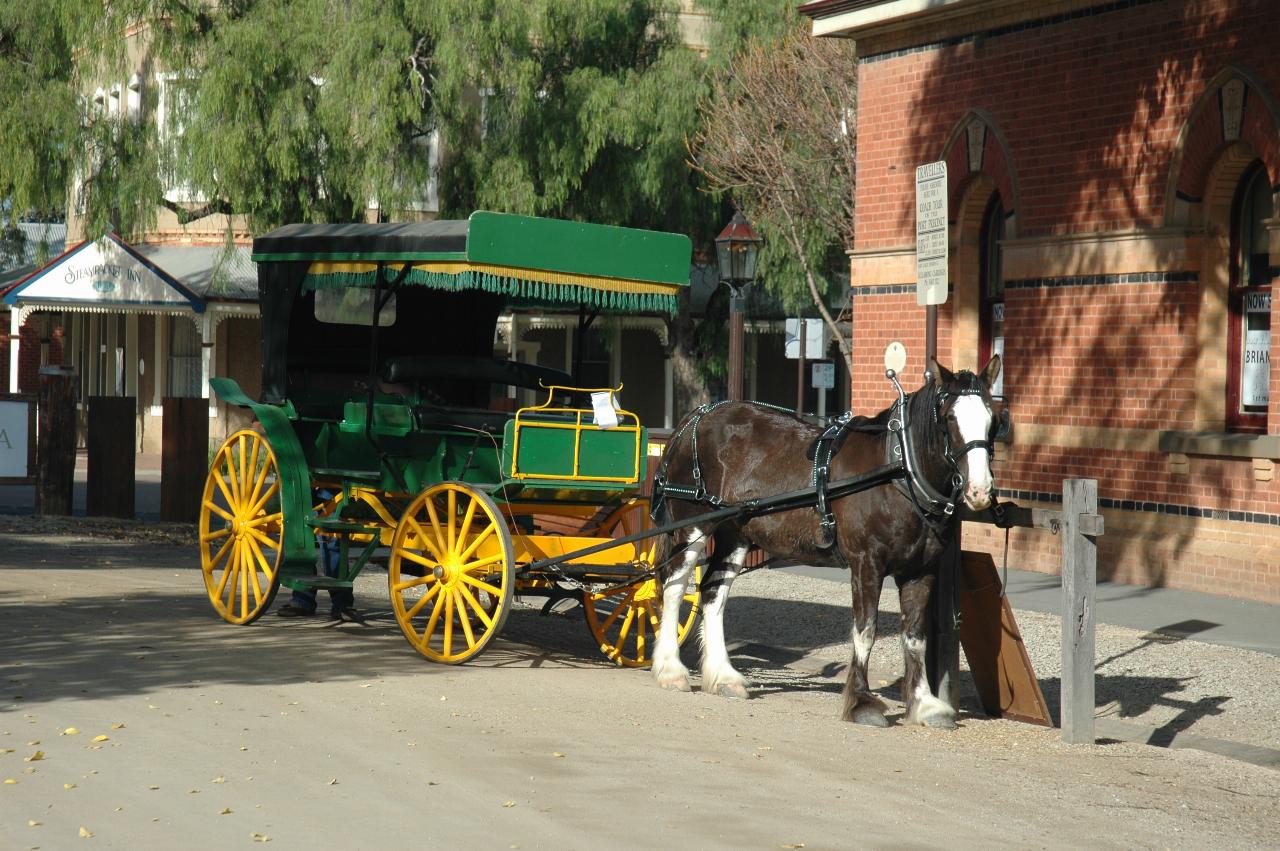
A nice way for tourists (and others) to feel part of the old time era by taking a ride with this one horsepower conveyance.
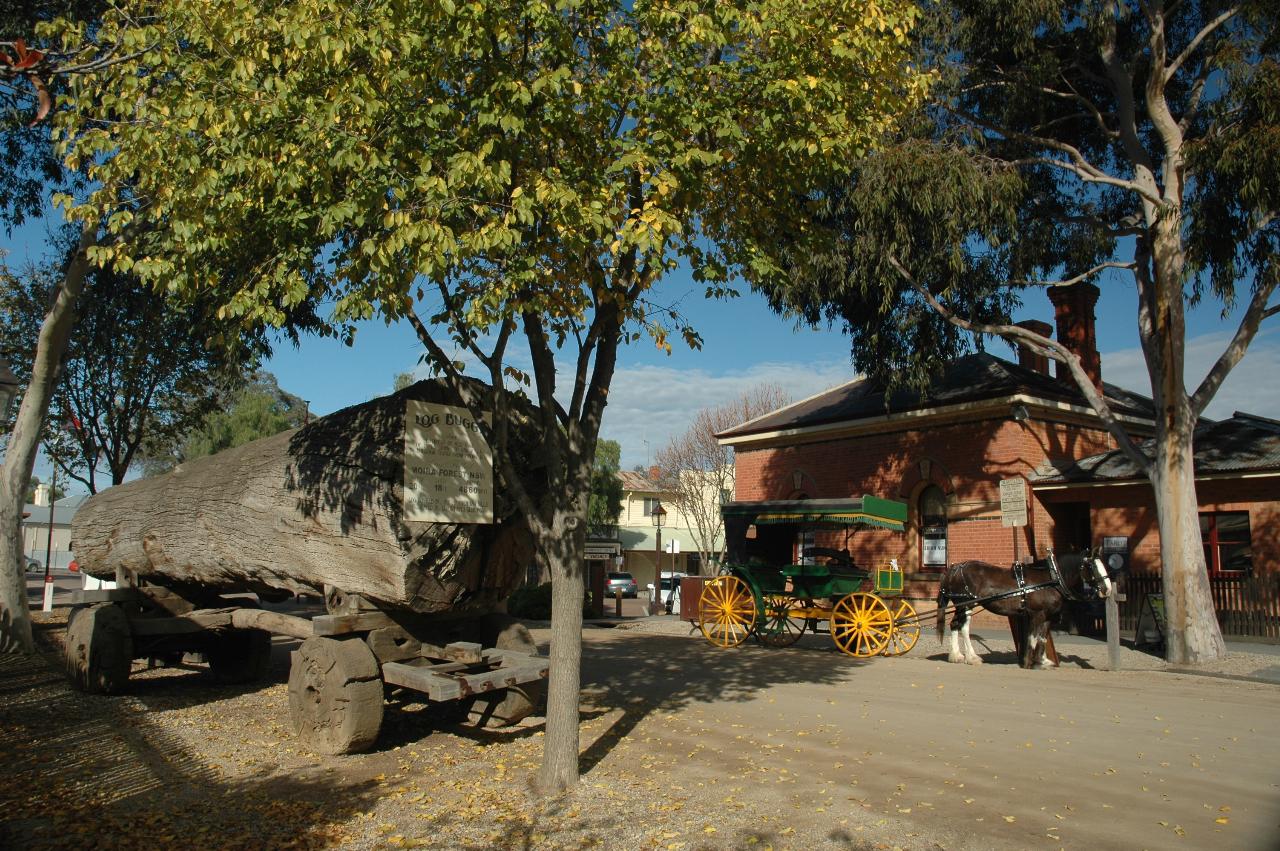
The log buggy was here in the 1960s, though in a park, not the historic precinct.

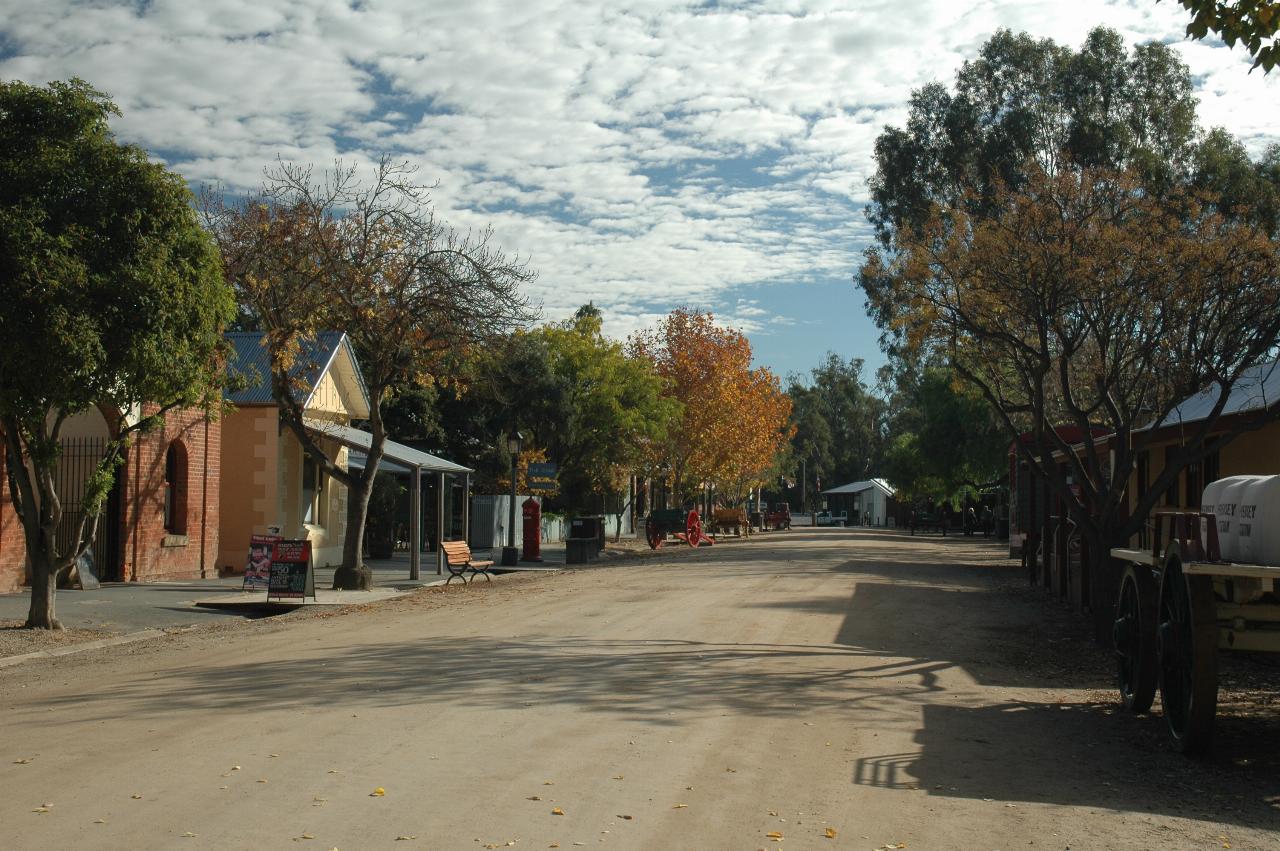
Looking north along Murray Esplanade. The Star Hotel is visible on the left - it's the building with an awning over the footpath. Note that most buildings on this road are occupied and running businesses.
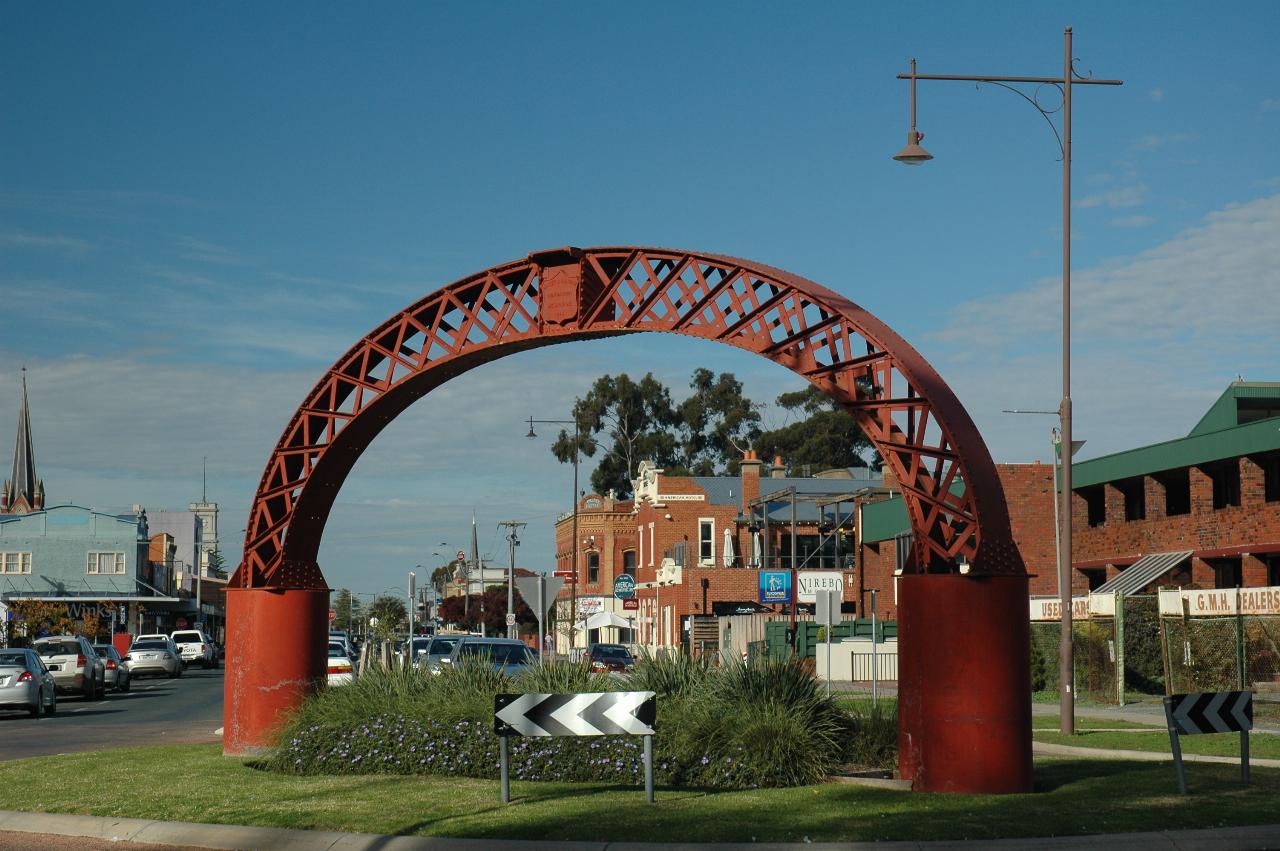
At the southern end of Murray Esplanade - outside the section closed to traffic - is this roundabout with an unusual decoration. It is an arch from an old bridge, one dating back to the 1800s I would guess. Echuca seems to understand its history, and use it wherever possible.
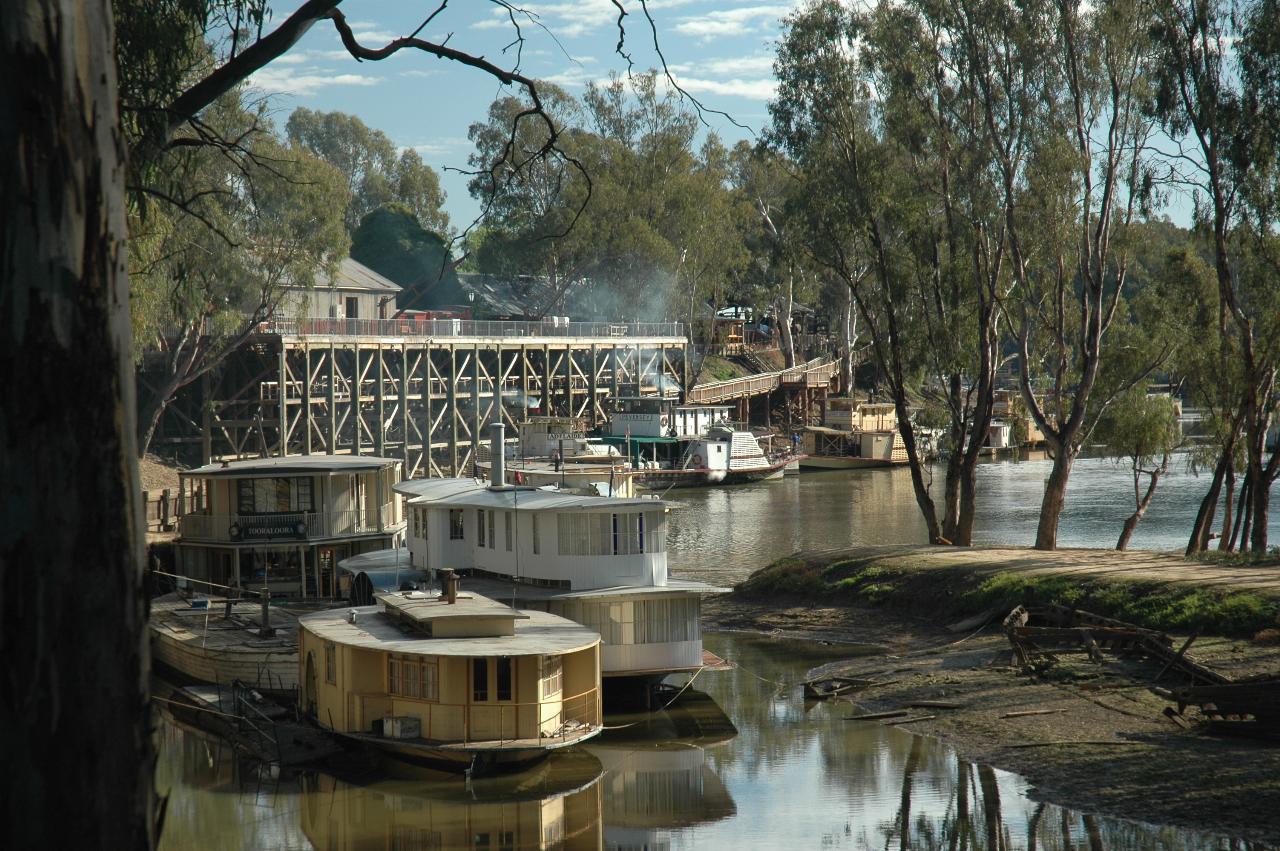
The main wharf at Echuca and a collection of paddle wheelers. Echuca has the largest collection of paddle wheelers in Australia. Some belong to the port, but most are privately owned. The ones nearest the camera are in a bay, and can receive servicing while there.
The main wharf is a shadow of its former self, during the late 19th century. It appears to be rather high, but the river level varies enormously. Currently it is quite low, but a photo on the wharf shows a paddle wheeler sitting with its deck almost at the top of the wharf!
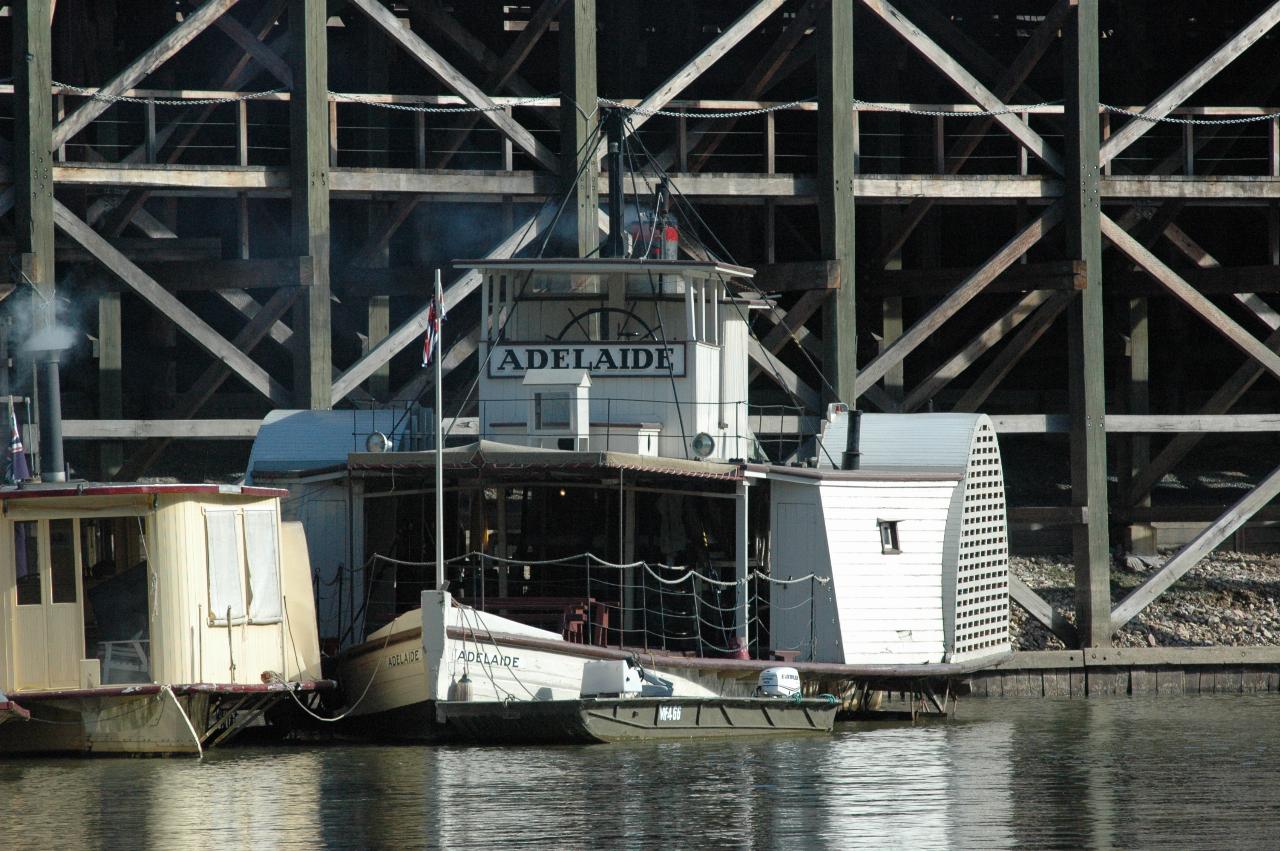
The P.S. Adelaide was in a park during the 1964 visit. Since then it has been restored, and is in service again. It is the oldest wooden hull paddlesteamer still operating anywhere in the world. It was built at Echuca in 1866, and is now used only for special occasions.
Her main purpose was towing barges on the river. In 1957, the sawmill started using
trucks to transport logs, so PS Adelaide was sold, and went to South Australia.
In 1960 it sailed back up the river to Echuca where it remained until 1963, when
it was placed into Hopwood Gardens. Restoration began in 1980, and was refloated in 1984.

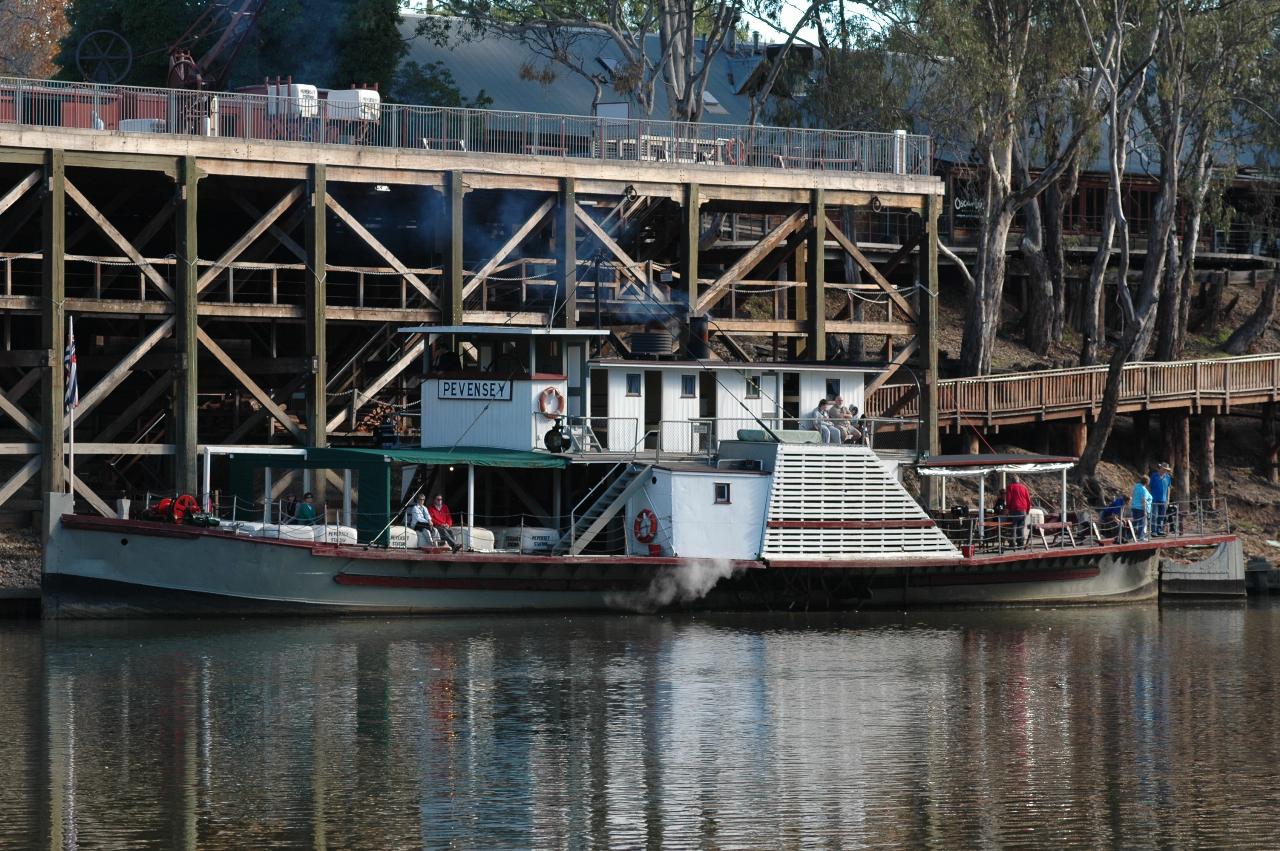
The PS Pevensey appears to be the main workhorse of the tourist trade. Here she is just starting a run down the river to a winery, whereupon it returns after dropping off or picking up passengers.
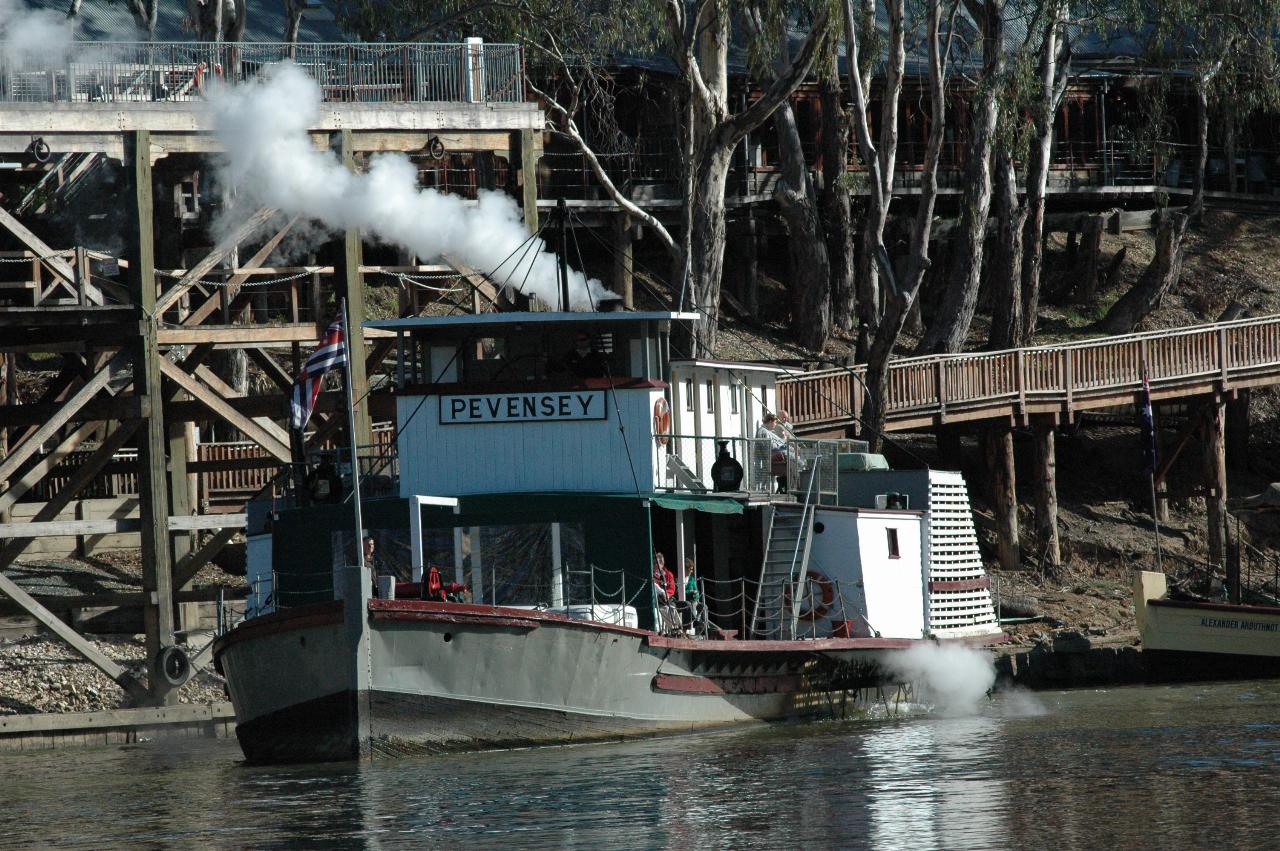
PS Pevensey under way. Both her paddle wheels are connected, so it is not possible to reverse one to assist making a turn. It is just a slow process using the rudder and a little assistance from the paddles until the turn is completed.
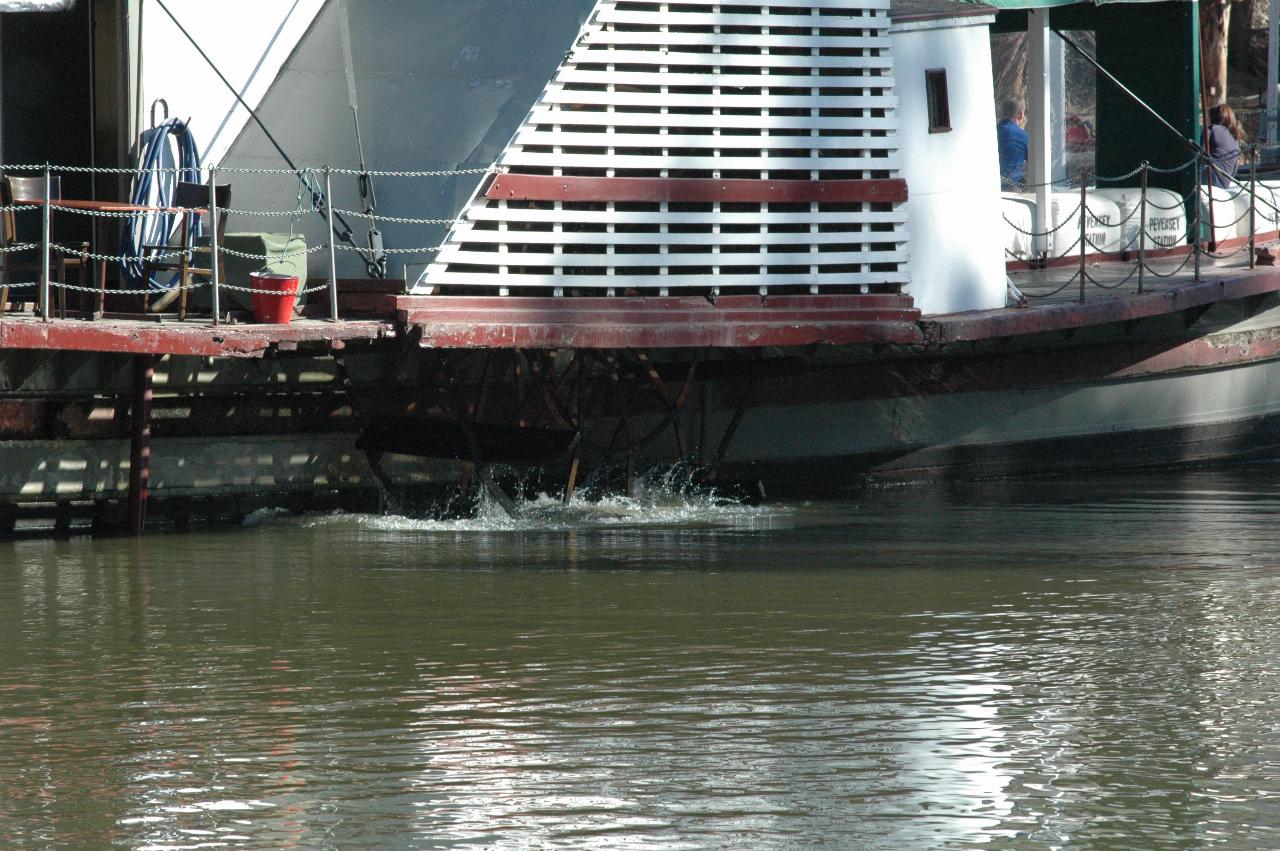
Turned around, those paddle wheels are starting to do their job.
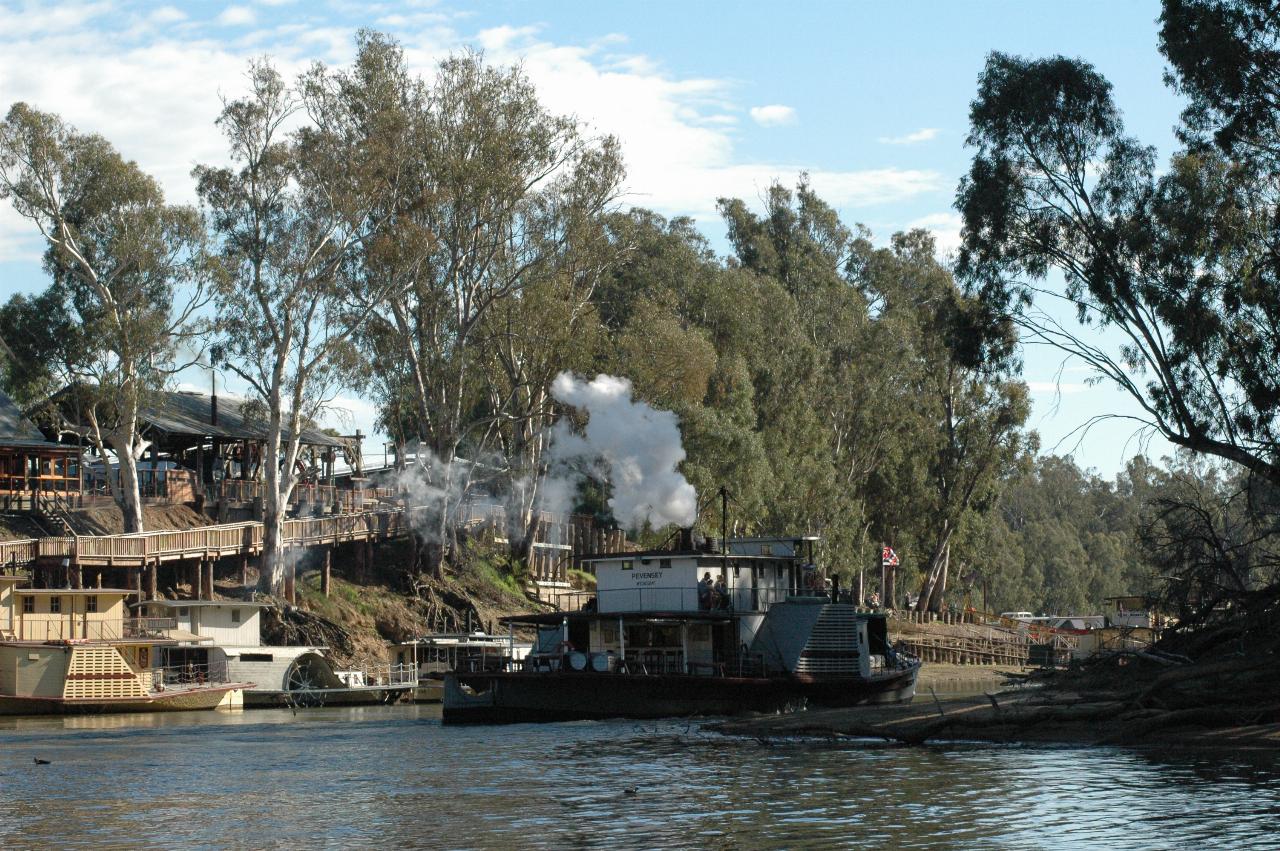
On her way downstream at last.